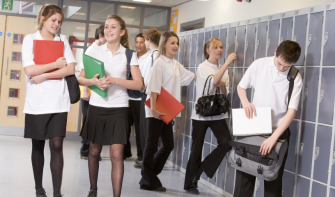Who is this module aimed at?
This module is for any member of staff working with autistic pupils aged 5-16 in mainstream and specialist schools.
Description
Research shows that successful transitions for both autistic children and their neurotypical peers, address barriers related to new environments, structures, routines, heightened levels of anxiety and fears over bullying. However, these factors are exacerbated in autistic children and young people (Makin et al, 2017).
This module aims to provide you with the knowledge, skills and understanding to plan transitions and implement processes to improve the education and wellbeing of children in the schools.
Module aims
This module aims to equip you with an understanding of:
- What we mean by transitions and the range of transitions encountered across the Primary and Secondary phases of education in schools.
- The impact of transitions on the education and well-being of autistic children and young people and reasons they may require specific enhanced transition support.
- How to support autistic children and young people effectively with transitions in schools.
Learning Objectives
After completing the module, you will be able to:
- Identify examples of school transitions and understand whether these might be described as ‘macro’ or ‘micro’.
- Understand the demands of transitions across the Primary and Secondary school phases for all children but especially autistic children and young people.
- Be able to identify why autistic children and young people require enhanced support to reduce the negative impact of transitions on their education and well-being.
- Apply knowledge of the strategies that can be used to support autistic children and young people with transitions in schools.
Session length
The length of the training session will depend on the training partner delivering the session. Please get in touch with them directly to enquire about this. If you can't see their contact details, please search for your local training partner and enquire.

Find Upcoming AET Training
Explore all upcoming Autism Training from our Partners.
Find Your Local Training Partner
Search for your local training partner to enquire about upcoming Autism Training or to organise a session for your team.
Browse all the AET Training Content which can be offered by our Partners.